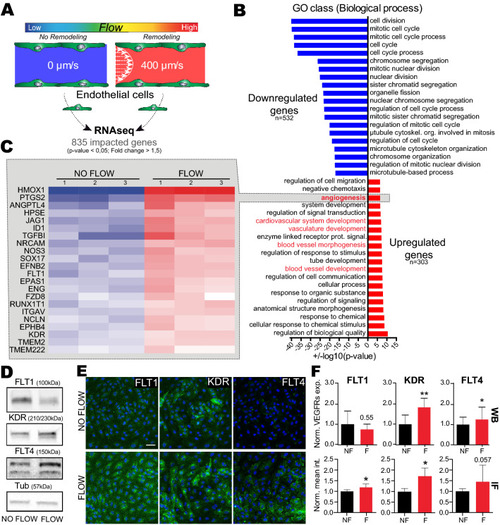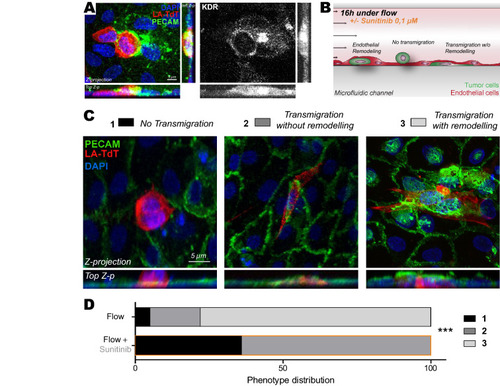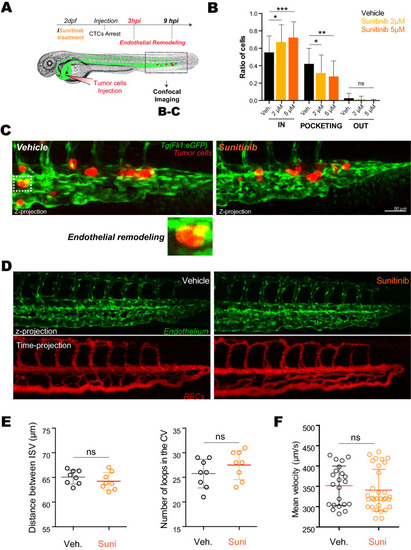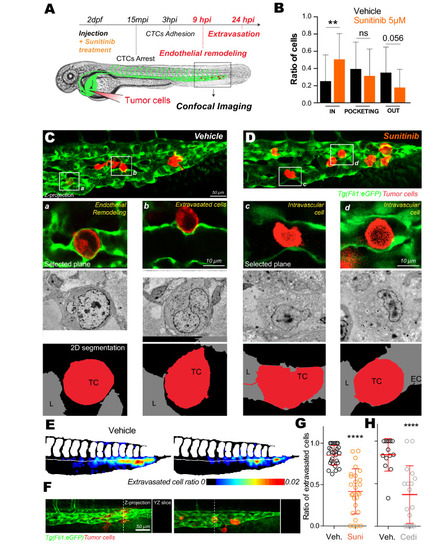- Title
-
Impairing flow-mediated endothelial remodeling reduces extravasation of tumor cells
- Authors
- Follain, G., Osmani, N., Gensbittel, V., Asokan, N., Larnicol, A., Mercier, L., Garcia-Leon, M.J., Busnelli, I., Pichot, A., Paul, N., Carapito, R., Bahram, S., Lefebvre, O., Goetz, J.G.
- Source
- Full text @ Sci. Rep.
|
Flow favors expression of gene program driving vasculature remodeling, including VEGFRs. |
|
Inhibition of VEGFRs with sunitinib impairs endothelial remodeling in vitro. |
|
Inhibition of VEGFRs with sunitinib reduces endothelial remodeling in zebrafish embryos. |
|
Inhibition of VEGFRs with sunitinib impacts extravasation by endothelial remodeling. |




